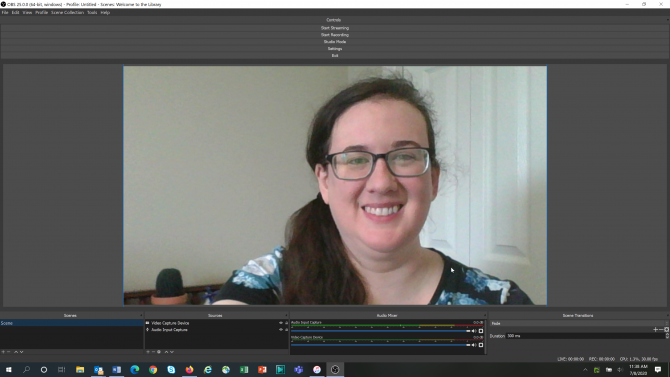Meg DeForest is a former Community Librarian at EPL.
Many of us have a story to tell and while lots of people enjoy writing in a journal or writing their memoirs that can be a lot of pressure! All those words and how many spaces are there supposed to be after a period anyway?
But there are so many other ways to tell your story. Humans have been storytellers for ages and while that usually takes the form of written or oral storytelling, these days we can record those stories digitally. So what is digital storytelling?
 Digital storytelling is a short (two to five minute) personal story created by combining a recorded narrative with images, music or other sounds. One popular example of these are oral histories, but they can use any form of media.
Digital storytelling is a short (two to five minute) personal story created by combining a recorded narrative with images, music or other sounds. One popular example of these are oral histories, but they can use any form of media.
Digital storytelling:
- Lets the creator share the story that is important or meaningful to them, no matter how big or small;
- Is an opportunity to share a perspective or a personal experience of a historical event which might add a different dimension to the traditional narrative; and
- Is an opportunity, both through creation of a story and viewing/listening to another person's story, to learn more about one another, building stronger relationships and understanding within our community.
There are some great examples of digital storytelling out there that you can take inspiration from.
Digital storytelling can be as simple as an online scrapbook of vacation pictures or capturing a time in your life that is significant or even your personal perspective on historical world events. So how do you get started?
- Interview someone to get a record of a beloved family story. Or you might have a story in mind that is important to you to record and share.
- Tell a story of a personal "first". Maybe that first car or that first night alone in an apartment by yourself.
- Record stories and memories about a specific geographical location, include pictures!
- Create a visual poem.
- Tell the story of an object that holds personal significance.
- Create a sound map: record and talk about sounds that are unique to your community. For this you could record the sounds of a walk through your neighbourhood.
If you are looking for more ideas we have some prompts to get you started and resources for interviews.
One thing to remember is that digital storytelling works best when it is just that, telling a story. Don’t feel like you need to write everything out and then read from a script. Choose a prompt or an item and tell the story. It can help to have someone there to be your audience/recording tech. This will help add a conversational feeling to your storytelling and make sure you don’t accidentally forget to press record before you start!
The technology for this can seem overwhelming, however, many of our devices have built in recording functions so we all have a mini recording studio in our pockets! You can record these stories from a voice memo on your phone, video record a Zoom call or use a series of pictures with a voice recording over top. But once you get that raw audio or video you will probably want to edit it. If you are working with an audio file Audacity is a free program with a lot of features. LinkedIn Learning has a wonderful tutorial on how to get started with Audacity if you need a little push to get started. If you want to tackle a full-on video you can use LinkedIn Learning’s huge library of video editing tutorials to bulk up your skills.
So however you choose to do it just get started! Share your story with the world or just those close to you and keep connected through digital storytelling.


Add a comment to: Telling Your Story (Digitally!)